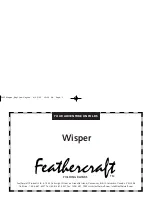
Printed 7/2/2016
MV Lioness Owners Notes v2015.2
Page 11 of 36
Lioness Start-up Procedure
1.
A. Check the oil level in both engines. The dipstick handles are on
the inboard side of each engine. DO NOT OVERFILL THE OIL
CAPACITY of the engines. It is ok for the engines to run when
the oil level is near the lower line. Checking the oil should
happen daily, before cruising.
B. Check the transmission fluid in each engine – toward the rear.
Any fluid on the dipstick means adequate fluid. Be sure to push
the dipstick down on the tube to ensure no leakage.
C. Check all fan belts to make sure they are taut and not slack.
D. Make sure there is adequate coolant in the expansion tank
mounted on the wall outboard of each engine.
2.
Check the oil level in the Westerbeke generator.
3.
Complete a visual check of the engine room for leaks, loose items
that should be secured, or anything unusual.
4.
Confirm that you have chosen the correct fuel tank to draw from.
Remember, only draw from and return to one tank at a time. The
feed valve and return valve to the same tank should be open. (See
Fuel Management for details).
5.
Close and “dog” the lazarette door.
6.
Review the exterior area around the hull and the flybridge to confirm
that there are no obstacles in the water or loose items that should be
secured.
7.
Leave the inverter switch on, if you plan to use any 110V outlets
while cruising.
8.
Make sure the stabilizer switch, (located overhead in the pilot house
above the helm), is turned to the “OFF” position (Center) until clear
of the marina or anchorage.
9.
If you are not using the engine for the day, start and run the
generator for at least ½ hour each morning and evening. The 8kw
generator will provide approximately 65 amps of power. If the
generator runs every evening, there may be no need to run it in the
morning.
10.
Review your power usage and the main breaker panel to make sure
you have power to everything you need to get underway.
11.
Make sure the shore power is disconnected. (See instructions, if
necessary)
12.
Check to make sure that the shift levers are in the neutral position.
13.
Check the raw water strainers for eel grass or other debris. The
strainers for the mains are forward of each engine. Shine a flashlight
from the back, thru the glass sidewall to see if there anything in the
bowl. If there is debris, it must be cleared.












































